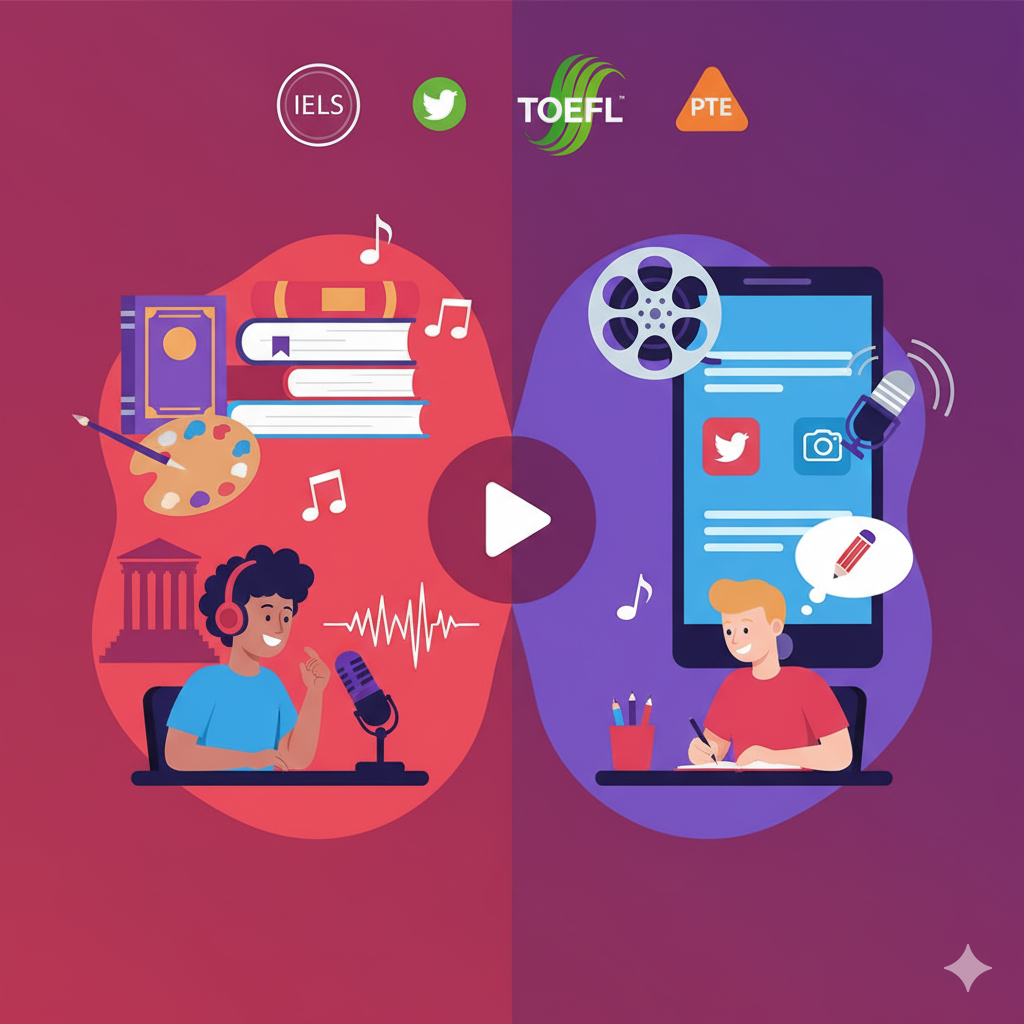
Culture and media are frequently tested topics in IELTS, TOEFL, and PTE, especially in Writing Task 2 essays and Speaking discussions. From the influence of advertising to debates on censorship, globalization, and cultural preservation, examiners expect candidates to use precise, natural collocations rather than simple vocabulary. This post provides a rich collection of culture and media collocations, paired with exercises and activities that will help you master them for higher fluency and exam success.
Culture & Media
Influence of advertising
- consumer behavior → Advertising strongly shapes consumer behavior in competitive markets.
- brand loyalty → High product quality nurtures strong brand loyalty.
- persuasive techniques → Advertisers use persuasive techniques to influence buying decisions.
- false claims → Regulators penalize companies that make false claims in ads.
- marketing strategies → Integrated marketing strategies combine online and offline campaigns.
- target audience → Identifying a clear target audience boosts ad effectiveness.
- product placement → Product placement in films subtly promotes consumer goods.
- celebrity endorsements → Celebrity endorsements can increase product visibility quickly.
- advertising revenue → Advertising revenue funds many free digital services.
- consumer manipulation → Ethical concerns arise over consumer manipulation in aggressive ads.
Role of art and music
- cultural identity → Art and music express and preserve cultural identity.
- creative expression → Creative expression contributes to emotional wellbeing and innovation.
- musical heritage → Preserving musical heritage maintains links to the past.
- art exhibitions → Art exhibitions attract tourists and showcase local talent.
- emotional impact → Music often has a deep emotional impact on listeners.
- traditional crafts → Supporting traditional crafts keeps artisanal skills alive.
- performing arts → Funding performing arts strengthens a city’s cultural life.
- cultural festivals → Cultural festivals promote cross-cultural exchange.
- artistic talent → Scholarships help nurture emerging artistic talent.
- musical composition → Studying musical composition develops analytical skills.
Cultural preservation vs globalization
- traditional customs → Protecting traditional customs helps sustain cultural diversity.
- cultural erosion → Global media can accelerate cultural erosion in smaller societies.
- global culture → Global culture spreads rapidly via film and the internet.
- cultural exchange → Student exchanges encourage cultural exchange and mutual respect.
- heritage sites → Heritage sites require protection from mass tourism damage.
- language preservation → Language preservation programs keep minority dialects alive.
- cultural homogenization → Cultural homogenization often accompanies economic globalization.
- indigenous practices → Recording indigenous practices preserves invaluable knowledge.
- world heritage protection → World heritage protection needs international collaboration.
- cross-cultural influence → Cross-cultural influence enriches cuisine and the arts.
Censorship and freedom of speech
- freedom of expression → Freedom of expression is essential for democratic debate.
- media restrictions → Media restrictions can limit citizens’ access to diverse viewpoints.
- political censorship → Political censorship undermines government accountability.
- artistic freedom → Artists often campaign for greater artistic freedom.
- public debate → Open public debate fosters better policy making.
- controversial opinions → Universities are key forums for discussing controversial opinions.
- information control → Information control by state media raises bias concerns.
- online censorship → Online censorship affects global platforms in different ways.
- hate speech → Laws try to balance free speech with limits on hate speech.
- civil liberties → Protecting civil liberties remains central to human rights work.


Pingback: Essential Collocations for IELTS, TOEFL, and PTE: 10 Major Topics - Goat Guru English